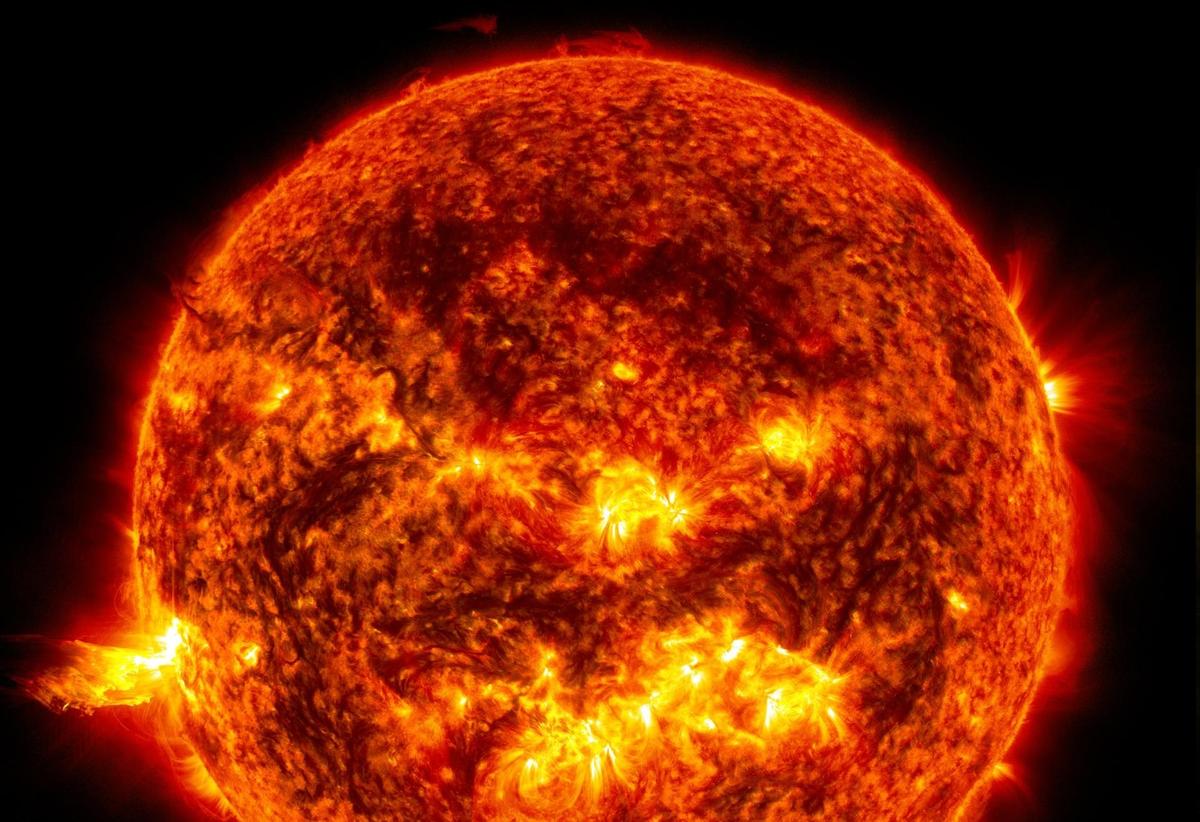Iron Opacity in Sun
Current Affairs International IssuesPosted by newadmin on 2025-04-09 08:44:07 |
Share: Facebook | Twitter | Whatsapp | Linkedin Visits: 13

Recent scientific studies have uncovered crucial insights into the opacity of iron in the sun, which plays a vital role in shaping our understanding of stellar physics and the behavior of stars. For years, scientists have been puzzled by the mismatch between theoretical solar models and observed elemental data. Emerging research now points to the possibility that the opacity of iron could be significantly higher than what was previously estimated, potentially altering our existing models of the sun and stars beyond it.
Opacity, in this context, refers to a material's ability to absorb light. In stellar environments, this property directly affects how energy is transferred and distributed within the star. If a material like iron has high opacity, it traps more light, reducing the amount of radiation that escapes. This, in turn, impacts a star’s luminosity, internal temperature, and energy transport.
As the nearest star to Earth, the sun serves as a benchmark for modeling stellar processes. Observations of the sun help scientists form theories that apply to stars across the universe, from their formation to their energy production and eventual influence on surrounding planetary systems. However, a persistent inconsistency has been the measured levels of carbon, oxygen, and nitrogen in the sun, which are 30 to 50 percent lower than those predicted by traditional models. This discrepancy has led researchers to question the accuracy of current elemental measurements and the assumptions they are based on.
Recent experimental evidence has highlighted the role of iron in these discrepancies. Studies suggest that the opacity of iron under solar-like conditions could be 30 to 400 percent higher than previously thought. This idea gained momentum following a 2015 study, which proposed that adjustments in opacity values could better reconcile theoretical predictions with observed data. Follow-up research has confirmed these findings, using advanced laboratory techniques to simulate the high-pressure, high-temperature conditions inside the sun.
To investigate iron’s true opacity, scientists have relied on cutting-edge tools and methods. Teams at Sandia National Laboratories, for instance, employed powerful X-ray sources and ultrafast imaging technologies to examine how iron behaves under solar-like environments. Their experiments revealed results that significantly deviated from standard predictions, suggesting that the existing opacity models may require a complete revision.
These findings could reshape our comprehension of the sun and other stars, prompting scientists to revisit and refine the models that underpin our broader understanding of stellar and cosmic phenomena.
Search
Categories
Recent News
- Bihar's Top Cop Opens Doors to Public Grievances
- Hyderabad Gears Up for Presidential Visit: Traffic Diversions Announced
- Hyderabad Expressway Gridlock: Three-Car Pile-Up Causes Chaos
- Hyderabad Gears Up: Security Measures for Presidential Visit
- Hyderabad's Rs 23 Lakh Scam: Fake Trading App Dupes Investors
- Pinkathon Hyderabad: Empowering Women, One Step at a Time
- Hyderabad's Drug Supply Chain Unravelled
- Hyderabad's New Year's Eve: Safety Meets Celebration
Popular News
- Navigating IPO Market Dynamics Amid Volatility and Regulatory Changes
- Innovative Green Practices and Environmental Initiative
- Massive Worldwide Microsoft Outage Disrupts Multiple Sectors
- తెలుగుదేశం పార్టీ - పేదరికాన్ని నిర్మూలించడంలో వాగ్దానం
- Universities Embrace Remote Learning Technologies Amidst Ongoing Pandemic